Deciphering principles of morphogenesis from temporal and spatial patterns on the integument
July 2015
in “Developmental Dynamics”
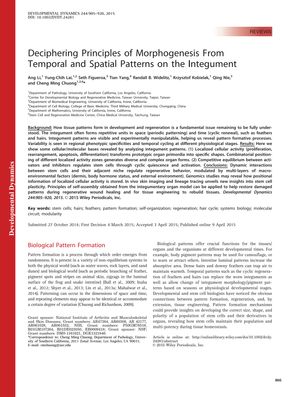
TLDR The conclusion is that skin and hair patterns are formed by a mix of cell activities, molecular signals, and environmental factors.
The document from July 6, 2015, explores the principles of morphogenesis with a focus on the integument system, including the development and regeneration of patterns like feathers and hairs. It discusses how localized cellular activities such as proliferation and differentiation, along with molecular signals like Wnt, BMP, and Notch pathways, contribute to the precise development of integumentary organs. The study emphasizes the importance of the activator/inhibitor model, Turing diffusion-driven instability mechanisms, and the role of mechanical stress in tissue patterning. It also highlights the temporal cycling of stem cells and the influence of macro-environmental factors on regenerative behavior. The document further explores the genetic and epigenetic mechanisms behind integument development, such as the role of a SNP in the EphB2 gene in pigeon head crest formation and the plasticity of ectodermal progenitors. The potential for therapeutic targets in regenerative medicine and the diversification of Metazoa due to new cell differentiation paths are also discussed. The research was supported by NIH grants and fellowships.
View this study on anatomypubs.onlinelibrary.wiley.com →
Cited in this study
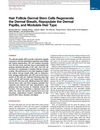
research Hair Follicle Dermal Stem Cells Regenerate the Dermal Sheath, Repopulate the Dermal Papilla, and Modulate Hair Type
Hair follicle dermal stem cells are key for regenerating parts of the hair follicle and determining hair type.
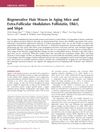
research Regenerative Hair Waves in Aging Mice and Extra-Follicular Modulators Follistatin, Dkk1, and Sfrp4
Aging mice have slower hair regeneration due to changes in signal balance, but the environment, not stem cell loss, controls this, suggesting treatments could focus on environmental factors.
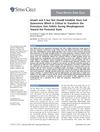
research Smad1 and 5 but Not Smad8 Establish Stem Cell Quiescence Which Is Critical to Transform the Premature Hair Follicle During Morphogenesis Toward the Postnatal State
Smad1 and Smad5 are essential for hair follicle development and stem cell sleepiness.
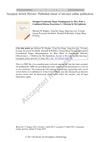
research Disrupted Ectodermal Organ Morphogenesis in Mice with a Conditional Histone Deacetylase 1, 2 Deletion in the Epidermis
Mice without certain skin proteins had abnormal skin and hair development.
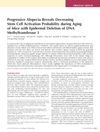
research Progressive Alopecia Reveals Decreasing Stem Cell Activation Probability during Aging of Mice with Epidermal Deletion of DNA Methyltransferase 1
Mice lacking a key DNA methylation enzyme in skin cells have a lower chance of activating stem cells necessary for hair growth, leading to progressive hair loss.

research Live imaging of stem cell and progeny behaviour in physiological hair-follicle regeneration
Hair regeneration needs dynamic cell behavior and mesenchyme presence for stem cell activation.
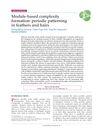
research Module-based complexity formation: periodic patterning in feathers and hairs
The conclusion is that understanding how feathers and hairs pattern can help in developing hair regeneration treatments.
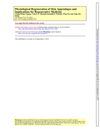
research Physiological Regeneration of Skin Appendages and Implications for Regenerative Medicine
The document concludes that understanding hair and feather regeneration can help develop new regenerative medicine strategies.
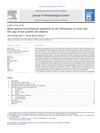
research Multi-layered environmental regulation on the homeostasis of stem cells: The saga of hair growth and alopecia
Environmental factors at different levels control hair stem cell activity, which could lead to new hair growth and alopecia treatments.
research Paracrine TGF-β Signaling Counterbalances BMP-Mediated Repression in Hair Follicle Stem Cell Activation
TGF-β2 helps activate hair follicle stem cells by counteracting BMP signals.

research Adipocyte Lineage Cells Contribute to the Skin Stem Cell Niche to Drive Hair Cycling
Fat-related cells are important for initiating hair growth.
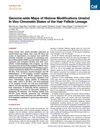
research Genome-wide Maps of Histone Modifications Unwind In Vivo Chromatin States of the Hair Follicle Lineage
Hair follicle stem cells use specific chromatin changes to control their growth and differentiation.
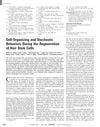
research Self-Organizing and Stochastic Behaviors During the Regeneration of Hair Stem Cells
Hair stem cell regeneration is controlled by signals that can explain different hair growth patterns and baldness.
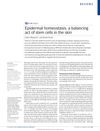
research Epidermal homeostasis: a balancing act of stem cells in the skin
Skin stem cells are crucial for maintaining and repairing the skin and hair, using a complex mix of signals to do so.
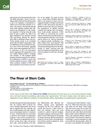
research The River of Stem Cells
The document concludes that certain chemicals can help maintain stem cell pluripotency and that understanding cell states is crucial for tissue regeneration.
research Analyses of regenerative wave patterns in adult hair follicle populations reveal macro-environmental regulation of stem cell activity
Hair follicle stem cells are controlled by their surrounding environment.
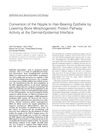
research Conversion of the Nipple to Hair-Bearing Epithelia by Lowering Bone Morphogenetic Protein Pathway Activity at the Dermal-Epidermal Interface
Blocking a specific protein signal can make hair grow on mouse nipples.
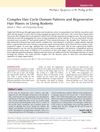
research Complex Hair Cycle Domain Patterns and Regenerative Hair Waves in Living Rodents
Mice hair growth patterns get more complex with age and can change with events like pregnancy or injury.

research Wnt-dependent de novo hair follicle regeneration in adult mouse skin after wounding
Hair follicles can regrow in wounded adult mouse skin using a process like embryo development.
research Molecular signaling in feather morphogenesis
Feather growth and regeneration involve complex patterns, stem cells, and evolutionary insights.
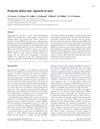
research Prolactin delays hair regrowth in mice
Prolactin slows down hair growth in mice.
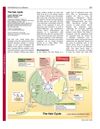
research The hair cycle
The document concludes that the hair cycle is a complex process involving growth, regression, and rest phases, regulated by various molecular signals.
research Molecular Dissection of Mesenchymal–Epithelial Interactions in the Hair Follicle
Understanding gene expression in hair follicles can reveal insights into hair growth and disorders.
research Defining the impact of β-catenin/Tcf transactivation on epithelial stem cells
β-catenin is essential for stem cell activation and proliferation in hair follicles.
research Molecular principles of hair follicle induction and morphogenesis
Hair follicle development is controlled by interactions between skin tissues and specific molecular signals.
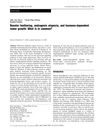
research Rooster feathering, androgenic alopecia, and hormone-dependent tumor growth: What is in common?
Sex hormones affect hair and feather growth and may help manage alopecia and hormone-dependent cancers.
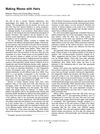
research Making Waves with Hairs
Skin patterns are formed by simple reaction-diffusion mechanisms.
research Morpho-Regulation of Ectodermal Organs
research Integument pattern formation involves genetic and epigenetic controls: feather arrays simulated by digital hormone models.
Feather patterns form through genetic and epigenetic controls, with cells self-organizing into periodic patterns.
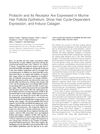
research Prolactin and Its Receptor Are Expressed in Murine Hair Follicle Epithelium, Show Hair Cycle-Dependent Expression, and Induce Catagen
Prolactin affects hair growth cycles and can cause early hair follicle regression.
research Molecular Mechanisms Regulating Hair Follicle Development
Understanding hair follicle development can help treat hair loss, skin regeneration, and certain skin cancers.
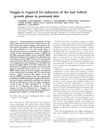
research Noggin is required for induction of the hair follicle growth phase in postnatal skin
Noggin is necessary to start the hair growth phase in skin after birth.
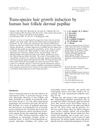
research Trans‐species hair growth induction by human hair follicle dermal papillae
Human hair follicle cells can grow hair when put into mouse skin if they stay in contact with mouse cells.
research Prolactin Signaling Influences the Timing Mechanism of the Hair Follicle: Analysis of Hair Growth Cycles in Prolactin Receptor Knockout Mice*
Prolactin affects when mice shed and grow hair.
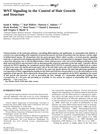
research WNT Signaling in the Control of Hair Growth and Structure
The research shows that a gene called Wnt3 affects hair growth and structure, causing short hair and balding when overactive.
research An estrogen receptor pathway regulates the telogen-anagen hair follicle transition and influences epidermal cell proliferation.
Estrogen affects hair growth and skin cell multiplication.